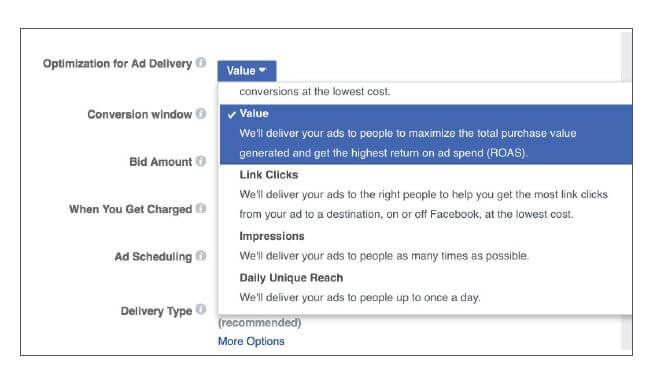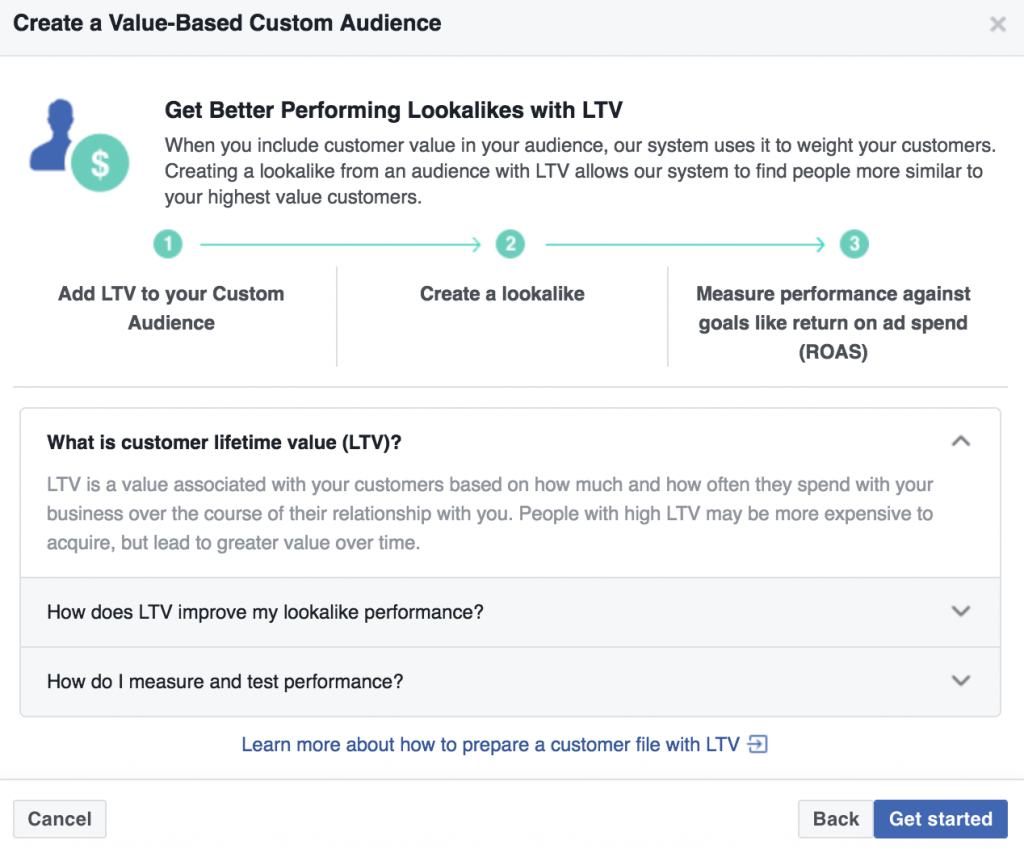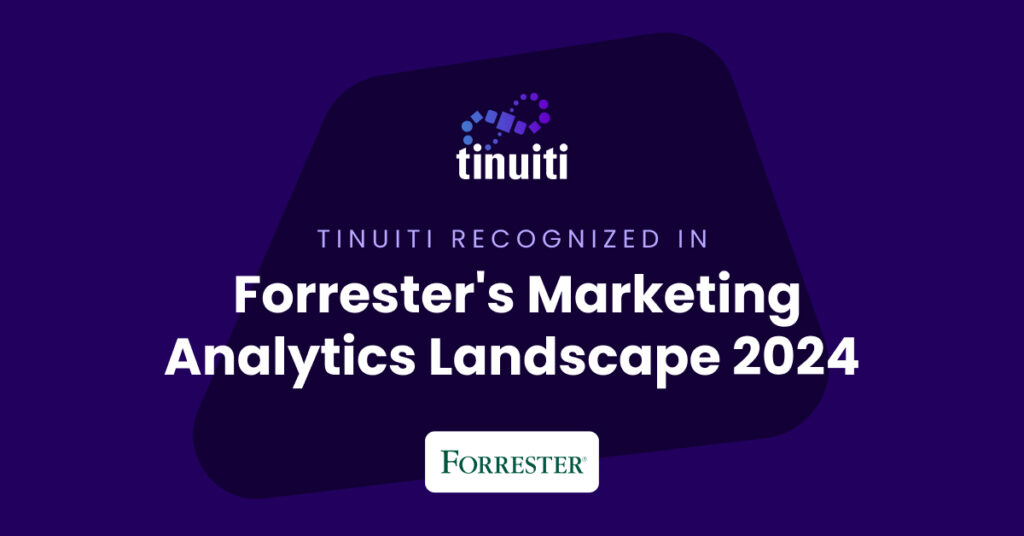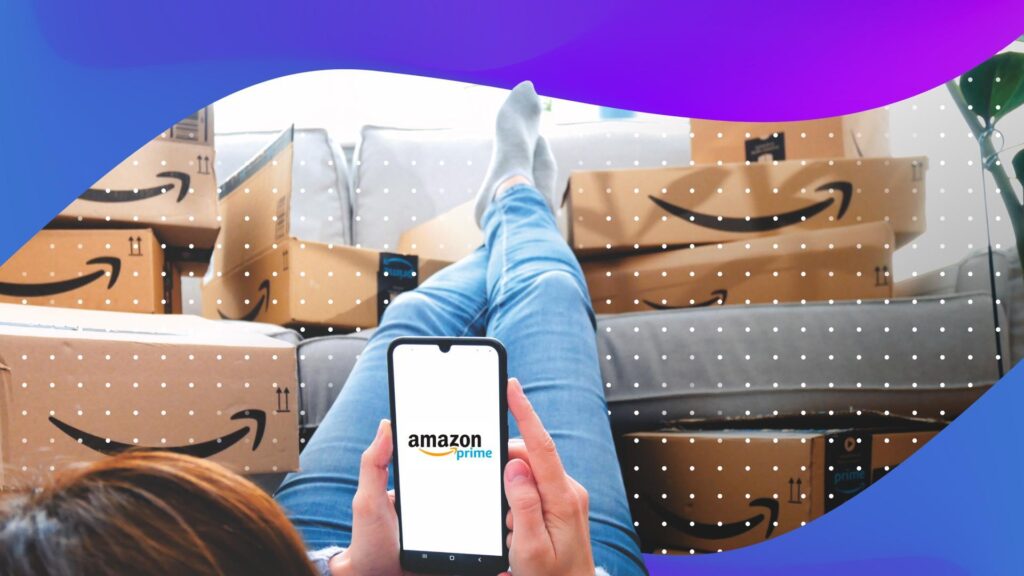Just because you set your Facebook campaign’s objective to “conversion” doesn’t mean your ads are automatically going to incite action.
In fact, if you really want your ads to be effective at bringing in leads and converting them, there are a few extra steps you’ll need to take – both during your campaign’s set-up and as it continues to run over the coming days and weeks.
Let’s take a look at how you can optimize your Facebook conversion ads for best results.
1. Implement a Facebook pixel on your website.
There’s no way to track what a Facebook user does once they click your ad unless you have the Facebook pixel installed on your website.
The pixel allows Facebook’s analytics to continue tracking the user even after they leave the platform. It can tell what pages they visit, what they add to their cart and whether they make a purchase or not.
You’ll need to install the pixel on your site, and then set up “Events” that specify what types of actions you want to Facebook to monitor. Use Facebook’s guide to installing the pixel if you’re new to the process or check out our blog post below.
“How to Install the Facebook Conversion Pixel & Track Your Ads“
2. Specify your conversion type in your campaign settings.
When initially creating your campaign and choosing its objective, make sure to drill all the way down.
After you select “conversion” as your objective, you should see a drop-down menu. Go through this menu and choose the type of conversion that you want your ads to drive. Also, be sure to select “Conversions” in the “Optimization for Ad Delivery” drop-down area.
3. Choose the right bidding strategy.
Bidding on Facebook conversion ads is a little tricky. You essentially have to ask yourself, “how much is a conversion worth?”
Taking into account the price of your products, the revenues you stand to gain from a conversion and many other factors, you should be able to settle on a number that’s reasonable and still gets you a solid ROI.
Use this number to set your average-cost bid or maximum-cost bid.
If you’re not sure what to bid, you can use automatic bidding, which lets Facebook optimize your campaign for maximize conversions within whatever lifetime budget you set.
Facebook recently released a new type of optimization called “value optimization,” which helps you target users with the most potential purchase value.

Here’s how Facebook explains it: “Value optimization works by using the purchase values sent from the Facebook pixel to estimate how much a person may spend with your business over a seven-day period. The ad’s bid is then automatically adjusted based on this estimation, allowing campaigns to deliver ads to people likely to spend more with your business at a low cost.”
A couple companies who are already implementing this new strategy include:
Pura Vida Bracelets, who used value-optimized carousel ads to increase online sales, resulting in a nearly 2X higher return on ad spend and 14% increase in website purchases.

Sunglasses maker and retailer Blender’s Eyewear also leveraged value-optimized ads against conversion-optimized ads and discovered the value-optimized ads yielded an 18% higher return on ad spend and 17% lower cost per purchase.
To help you assess the value of this new optimization type, advertisers can also leverage the Website Purchase ROAS reporting metric, allowing advertisers to see the total value generated from their ads.
Pro-tip: You can access this new functionality when you set up a conversions campaign by selecting “value” as the optimization type.

4. Set your targeting properly.
Though you certainly want to target your ads to some degree, be careful about being too specific.
According to Facebook, “sometimes, small target audiences can limit delivery of your ads.” Additionally, it impacts the amount of data Facebook can collect, making it harder to effectively optimize as your campaign goes on.
A good option is Facebook’s new value-based lookalike audiences.
The audiences are based off a custom audience you’ve built – maybe one from your existing customer database or a segmented email list. Facebook then uses this data to expose your ads to other users who share similarities with those customers, focusing particularly on those with the most potential value.

By adding a “customer lifetime value” feature, lookalike audiences can now target only those users who resemble your most profitable, bottom line-boosting ones—the people who will deliver the most value to your business over time.
After all, not every customer is created equal, right?
Someone who purchases from your business a single time during a flash sale certainly doesn’t have as much to offer you as a customer who buys your products on a monthly basis.
So why would you want to target the former with your ads? Sure, one or two users might buy in—but will they lead to long-term profits? It’s doubtful. Facebook’s new value-added lookalike audiences reduce this wasted spend and increase the efficacy of your ads overall.
To learn more, check out: “Target Profitable Customers with Facebook Value-based Lookalike Audiences“

5. Watch your ad data.
When optimized properly, Facebook conversion ads should deliver at least 50 conversions over a seven-day span. Of course, it’d be great if you could have more than that, but Facebook says to consider 50 a baseline minimum.
This allows the site to collect enough data to improve your campaign and, as Facebook puts it, “We can find the right people as long as our system can gather enough conversion data.”
If you’re not able to get 50 conversions, consider optimizing for a different conversion type. Switch from purchases to add-to-cart events, link clicks or another higher-funnel action that’s a little more common.
To learn more about Facebook conversion ads and strategies, email [email protected].
You Might Be Interested In












